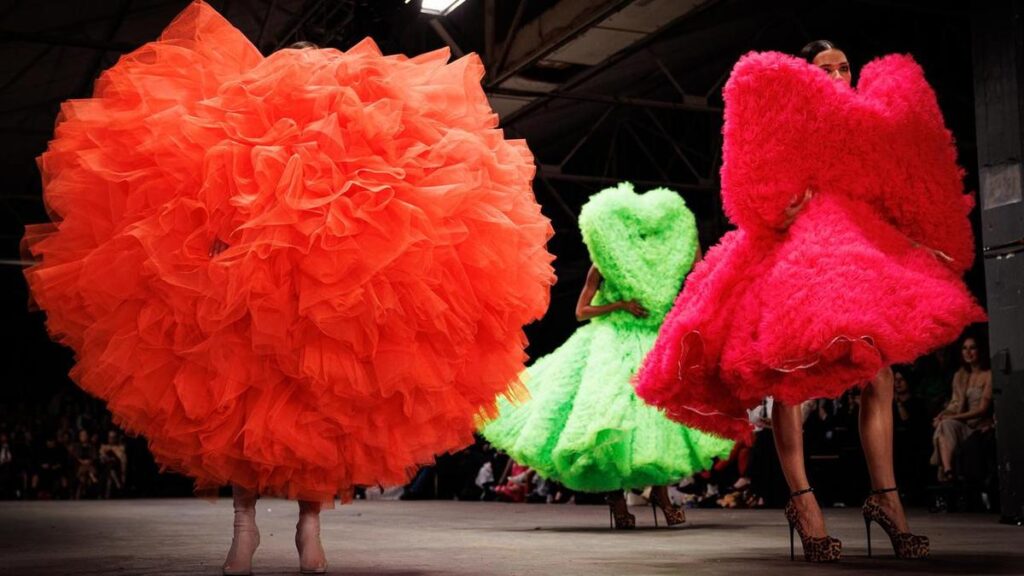
Melbourne Fashion Week featured a showcase of innovative designs from emerging fashion students, highlighting a trend towards sustainability and ethical practices. The event, held on September 1, 2023, drew attention for its unique approaches to materials and design philosophies. Among the standout designers was Gracie Macleod, a 19-year-old student from the Whitehouse Institute of Design, who presented garments crafted from discarded fish skins.
MacLeod’s collection included handmade bodices and belts made from salmon skins that she sources from a local fishmonger at the South Melbourne market. After a meticulous process involving de-scaling, washing, and a two-week tanning procedure, the fish leather pieces were transformed into striking fashion items. “That does mostly get rid of the smell… it smells like the ocean, it smells salty,” Macleod explained, noting the unique texture and tones of her materials. For one bodice, she used approximately 25 fish skins, showcasing the intricacy of her work.
The student runway show, staged at Younghusband in Kensington, featured up-and-coming designers from various institutions, including the Box Hill Institute, Holmesglen, RMIT, and LCI Melbourne. This platform allowed students to present their visions outside traditional commercial constraints. “It’s really nice to sit back and enjoy what we’ve done; it’s so inspiring,” said Macleod about the opportunity to showcase her work.
Another featured designer, Stephanie Hookey, a 23-year-old honours student at RMIT, shared her experiences working as a design assistant. Hookey expressed concerns about the lack of ethical and sustainable practices in the industry, despite the education provided on campus. “A lot of designers my age have a love-hate relationship with the industry for the amazing things it can produce but there are negative impacts,” she stated.
Statistics from The Australia Institute highlight the scale of the issue, revealing that over 1.4 billion units of new clothing are introduced to the Australian market each year, with more than 200,000 tonnes ending up in landfill. These figures position Australia as the world’s largest consumer of textiles per capita, surpassing the United States according to 2024 data.
Hookey’s latest collection draws inspiration from a childhood doll affectionately known as “Cocaine Barbie.” Her designs feature a kitsch aesthetic, incorporating bright colors, hidden pockets, and velcro fastenings. Among her standout pieces is an interactive dollhouse handbag equipped with touch-sensitive lights. Her commitment to size inclusivity is evident, as her outfits range from sizes eight to 18.
Another emerging talent, Paris Jones, also from the Whitehouse Institute, took a different approach by centering her collection around climate change. Jones aims to use fashion as a medium for remembrance and healing, incorporating sustainable practices throughout her designs. Key pieces include a hand-blown hourglass timer clutch filled with sand and a puffer jacket made from upcycled doona wadding. She utilized deadstock fabrics from renowned brands, including Giorgio Armani, to further emphasize her commitment to sustainability.
Melbourne Fashion Week runs until September 3, 2023, providing a platform for a new generation of designers committed to transforming the fashion landscape. As more students embrace sustainable practices, there is hope for a more inclusive and environmentally responsible future in the industry.






